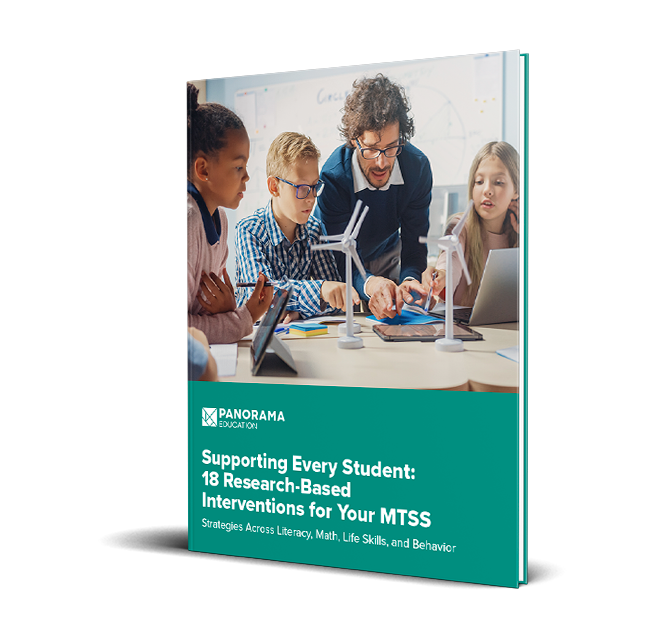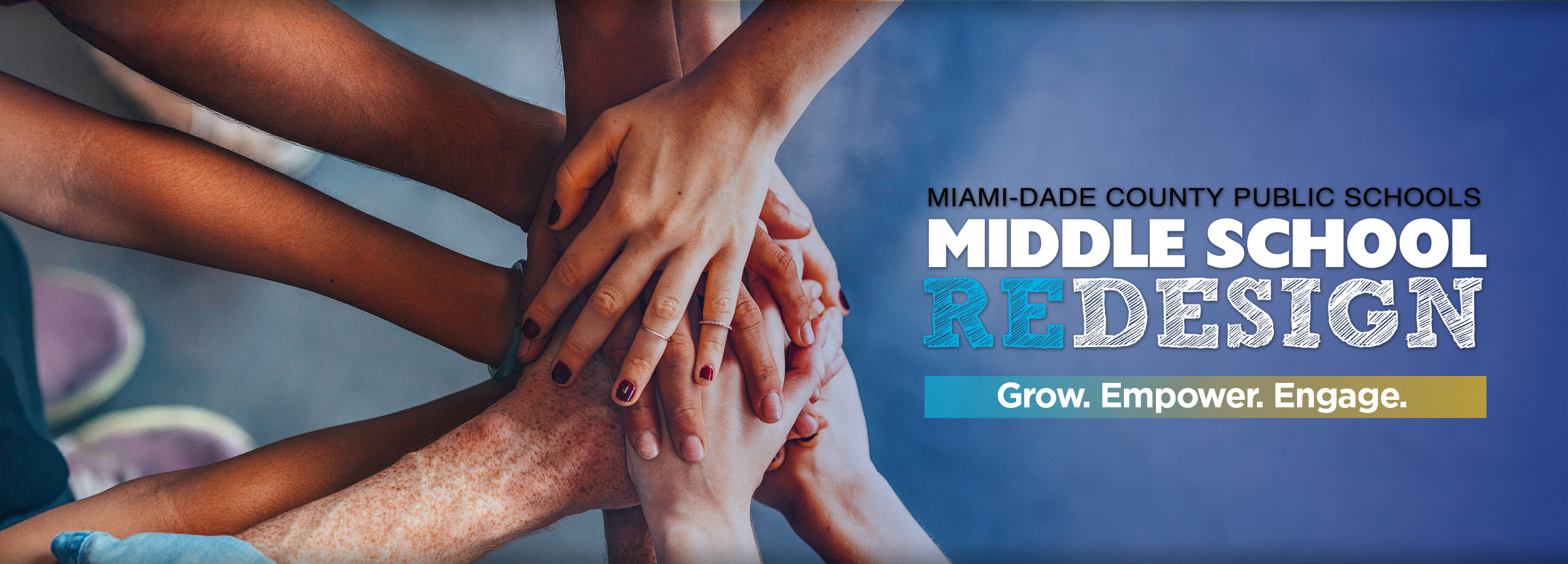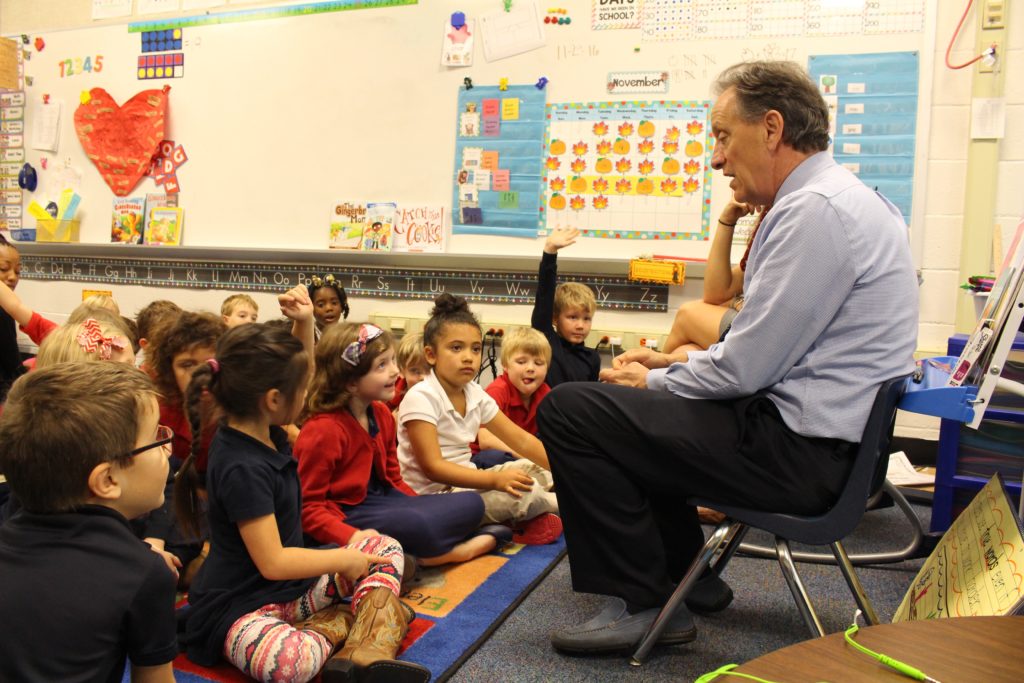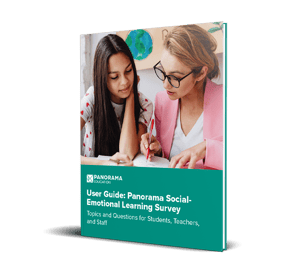 When academic results in our middle schools stagnated at Miami-Dade County Public Schools (M-DCPS) in Florida, we took a hard look at our traditional model to understand how we could better prepare our 45,000 middle school students for success in high school and beyond.
When academic results in our middle schools stagnated at Miami-Dade County Public Schools (M-DCPS) in Florida, we took a hard look at our traditional model to understand how we could better prepare our 45,000 middle school students for success in high school and beyond.
Three themes emerged after gathering feedback from students and educators: Students were asking for greater social-emotional support, a more engaging curriculum, and more opportunities to connect with adults.
This motivated the Middle School Redesign—a district-wide initiative that aims to improve the experience for our middle school students through innovative changes across school culture and the learning environment.
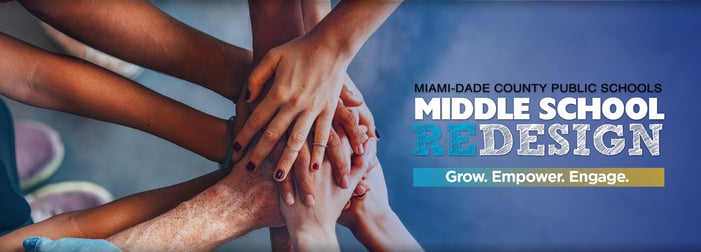 via M-DCPS Middle School Redesign
via M-DCPS Middle School Redesign
At M-DCPS, we believe that social-emotional learning (SEL) plays a central role in helping our students thrive academically. One pillar of the Middle School Redesign project is to promote a caring environment, connectedness, and the social-emotional wellbeing of students so they are more prepared to learn.
That's why we partnered with Panorama Education for SEL measurement and professional development. As an Executive Director in the Office of Academics and Transformation, I oversee this work as a key component of the Middle School Redesign.
Here are three actions we've taken at M-DCPS to promote middle school SEL. This isn’t easy work, especially given the scale of diverse communities we serve. We do it because we know it’s what’s best for our students.
1. Gathering Social-Emotional Learning Data from Middle School Students
To ensure a data-driven approach to the middle school transformation process, we began assessing students' perceptions of their SEL skills through the Panorama Social-Emotional Learning Survey. This data helps us understand our strengths and areas of growth for supporting student SEL. It also provides educators with ongoing SEL data as they monitor the impact of the work they're doing.
Through reporting in the Panorama platform, we can get a clear picture of the following components of SEL and school climate:
- Sense of Belonging – Do our students feel valued at their school?
- Safety – How do our students feel across key facets of safety, such as in-person and online bullying behavior and physical safety?
- Growth Mindset – Do our students believe they can increase their intelligence and talent through effort?
- Grit – Do our students believe they can persevere through setbacks to pursue an important goal?
- Social Awareness – Do our students consider the perspectives of others and empathize with them?
- Self-Efficacy – Do our students feel confident in their ability to achieve academically?
- Valuing of School – Do our students feel that school is interesting, important, and useful?
"Social-emotional learning isn’t easy work, especially given the scale of diverse communities we serve. We do it because we know it’s what’s best for our students."
[Click to Tweet]
With the SEL data in hand, we coordinate with many different district offices—including the school improvement planning team, regional superintendents, and the student services team—to ensure that stakeholders are abreast of the data and, if appropriate, the data is incorporated into school improvement plans. The SEL data lives in these school improvement plans, and is revisited several times throughout the school year.
2. Providing Professional Development for Educators
Professional development is a critical piece of our SEL work, and we work closely with Panorama to run trainings and workshops. At the beginning, it was mostly about familiarizing educators with basic skills and concepts—what is SEL data? What does the data look like? How do you implement the SEL survey in your schools, navigate the Panorama platform, and find the data you’re looking for?
In our second year of using Panorama, our professional development is shifting towards how to utilize the data at school sites. Now that our educators are trained on the platform, we're thinking more deeply about how principals, counselors, and teachers should be using the information to drive change for students.
We're also focused on differentiating the professional development to cater to different groups of educators. For example, while some educators are "bought in" right away, others may feel uncomfortable with qualitative SEL data after years of working with academic mastery data or may see SEL as an additional responsibility on top of everything else.
Overall, as I think about professional development and building adult capacity, this is how I break down that work:
- Skills: How do we teach our educators the basics of what SEL is and how to utilize SEL data in their schools? This is typically the easiest to provide through professional development workshops.
- Conditions: What conditions are teachers working under, and how can we change those conditions so teachers are able to engage with and act on the data we’re providing? This is more difficult to do and may require shifting of systems and processes to intentionally create that space for our educators.
- Mindset: Every teacher cares about their students, but they all come in with different mindsets. For instance, a teacher who grew up in a strict household may bring that approach to discipline in the classroom. That's not a wrong approach—it just may not be the right one for every student. We need to help teachers adapt their mindsets and approaches to what will best serve our kids.
3. Developing School-Level Strategies to Improve SEL and School Climate
Panorama survey results are transparent and available to every school site. Principals, counselors, and teachers can dig into their school-specific data to identify trends and areas of need—filtering the data by demographic groups, by topic, by question, and more. Each school is then responsible for creating site-specific strategies to improve.
Here are just a few examples:
- To improve safety, one large campus developed a color-coded pass system based on a student suggestion and also introduced the program with a video created by students.
- To improve sense of belonging, one campus introduced a “Club Hour” for students to explore new interests and skills. The campus has seen a huge impact in terms of attendance on Club Hour days and increased student engagement.
- To improve valuing of school, all of our middle schools have introduced new or expanded current elective offers based on a student interest survey to provide a well-rounded, engaging educational experience.
By embedding social-emotional learning into our Middle School Redesign project—and by putting student voice front and center—our hope is that schools will be able to keep every middle school student on track academically, cared for socially and emotionally, and connected to peers and adults on campus.
Linda Sun is an Executive Director in the Office of Academics and Transformation at Miami-Dade County Schools in Florida.
